I had an idea for a post. I started making a list of items to include.
And I started to think of the word or words to describe what the objects on my list have in common.
Words that I considered were:
Prolepsis. The representation of a thing as existing before it actually does or did so. Nope.
Metachronism. An error in chronology committed by placing an event after its real date. Not exactly.
Parachronism. An error in chronology, especially one committed by placing an event before its real date. Not exactly.
Anachronism. A thing belonging or appropriate to a period other than that in which it exists, especially a thing that is conspicuously old-fashioned.
Anachronism is the closest to what I am getting at here. But instead of hitching my wagon to a specific term, I am taken by “chronological error.” That covers the bases. The world maps in the radio room in the movie Titanic show borders of nations as they appeared in 1997, not as they were in 1909 – a chronological error. A hitching post in 2019 Berkeley? A chronological error Four hitching posts in 2019 Berkeley? Four chronological errors.
It’s been a while.
William Hahn painted this in 1875; he called it “Horses Grazing Berkeley.” Hahn was a German painter who trained at the Hochschule für Bildende Künste Dresden (Dresden Academy of Fine Arts) and the Staatliche Kunstakademie (Dusseldorf Academy). He buddied up with a Scottish artist, William Keith, and the two came to Boston and then California. Keith is associated with Tonalism and the American Barbizon school. He lived at 2207 Atherton, now within Edwards Field.
This painting may very well have been pre-hitching post, but how could I not share it?
This horse stands in front of the Hundrick Grocery on Rose Street just above Oxford.
Here – horse-drawn wagons delivering goods to the Berkeley Free Market on the Shuman block in 1906.
Where there are horses there are stables. I can picture several converted stables around Berkeley.
This is a special one – a Maybeck house – the Senger House. Does that mean that this is a Maybeck stable? Does that mean that this is a Maybeck horseshoe? The hay was hoisted to the loft above.
Another chronological error – the typewriter.
I learned to type in Sixth Grade (A Form). My teacher Mr. Davenport encouraged the boys in his class to taking typing lessons from him after school on Fridays. He baked a secret-ingreident cake for each boy who could type 30 words a minute. I made it. The “secret ingredient” was instant coffee. Learning to type made me free. These days, kids learn the keyboard without lessons.
Manual typewriters – a chronological error within a chronological error. Wikipedia the Great and Terrible tells us that makers, steampunks, hipsters, and street poets still dig manual typewriters – a commodity fetish (not In the sense of Karl Marx’s critique of political economy).
Julia Vinograd, our recently departed Poet of Berkeley, used this Smith Corona.
She composed her poems handwritten in notebook and then typed them.
 In the song Carmelita, Warren Zevon sang of pawning his Smith Corona and going to meet his man, who hung out down on Alvarado Street by the Pioneer Chicken Stand.
In the song Carmelita, Warren Zevon sang of pawning his Smith Corona and going to meet his man, who hung out down on Alvarado Street by the Pioneer Chicken Stand.
The typewriter gives us a chronological error of a verb – to type. We still type. It sounds better than “to keyboard” or “key stroke.”
For those who dearly miss the typewriter, there is a solution.
John Storey sent me this photo. I am impressed but not tempted. In the same vein
Plus it into your mobile phone and – voila – you’re old school phone.
The show room of Automatic Response at 1461 Eastshore Highway is filled with chronologically erroneous office machines collected by owner Steven Papai. Worth a visit sez I.
The first patent for a rotary dial was granted in 1892. The commonly known form with holes in the finger wheel was introduced in1904. Rotary dial service in the Bell System in the United States was not common until the introduction of the Western Electric model 50AL in 1919.
Tthe rotary dial was gradually supplanted by dual-tone multi-frequency push-button dialing, I remember my family’s first touch tone, playing “Mary Had a Little Lamb” – sort of – with the tones. .
After initial customer trials in Connecticut and Illinois, approximately one fourth of the central office in Findlay, Ohio, was equipped in 1960 with touch-tone digit registers for the first commercial deployment of push-button dialing, starting on 1 November 1960.
The touch tone was showcased in the Bell Telephone Pavilion at the 1962 Seafle World Fair. We were told that it saved precious seconds every call.
I was a stamp collector at the time. I remember this stamp well.
Please notice the telephone number on the lower photo above, the one from Lasher’s. Hold that in mind. We will revisit.
Another linguistic anachronism springs from this technological anachronism – “Dial” as a verb that we use although we are no longer dialing. And we still talk about the “dial tone.”
Speaking of Lasher’s Electronics, chronological errors abound, most obviously tubes and tube testers. (Flash back to Carmelita, where he hears Mariachi music on his stereo and the “tubes they glow in the dark.”
RCA was a major producer of vacuum tubes, which were branded Radiotron in the United States. They were a major profit source for the company. RCA created a series of innovative products. Miniaturized Nuvistor tubes used in the tuners of television sets were one of the last major vacuum tube innovation, designed to compete with the newly introduced transistor. By 1975, RCA had completely switched from tubes to solid-state devices in their television sets.
Speaking of television sets:
Television antennas. There were / (sort of) are the indoor antennas – the rabbit ears, whips, loops and flats – all great names.
An outdoor TV antenna is a high-gain directional antenna needed to achieve adequate reception in fringe reception areas. Outdoor antenna designs are often based on the Yagi-Uda antenna or log-periodic dipole array (LPDA). These are composed of multiple half-wave dipole elements, consisting of metal rods approximately half of the wavelength of the television signal, mounted in a line on a support boom. Outdoor antennas are highly directional. They have a narrow main lobe; that is, their maximum sensitivity is only achieved over a narrow angle along their axis, so they must be pointed at the transmitting antenna.
And then came cable.
And then came satellite dishes.
And then came computers.
And so went television antennas, to the dustheap trash heap ash heap trash can dust bin scrap heap rubbish heap dust pile dung pile of technology history. I am not at all sure that a young person today could identify this photo as an antenna or conceive of its purpose.
Nehi you ask? Pronounced, by the way- “Knee High.” It was a soft drink introduced by Chero-Cola in 1924. It was Very Big in the 1940s. Your Favorite Drink in Your Favorite Bottle!.
Why Nehi pronounced “knee high?”
 Early advertisements often featured a woman with her skirt knee-high.
Early advertisements often featured a woman with her skirt knee-high.
I have a certain weakness for roadside vernacular architecture and apologize to those of you who are bored by the photos of the giant Nehi bottle in Alabama.
My personal experience with Nehi soda was limited to grape soda I drank as a boy in Christmas Cove, the resort end of Rutherford Island in Maine. We spent a few weeks each summer in South Bristol, the lobstering end of the island. My sister and I took swimming and tennis and sailing lessons at the Christmas Cove Improvement Association.
On hot August days I’d buy a soda.
In December 2011 I had a few Very Bad days in critical care at Alta Bates. I was on a respirator and sedated. I was more asleep than awake the whole time, and certainly closer to the other side than I wanted to be. In my effort to find peace and calm, I thought of every detail I could of my boy days in Maine. And in that effort I fixated on the Nehi grape soda. I promised myself I’d have a grape soda that summer. I did.
The Nehi sign on Ninth Street is a “ghost sign,” an old hand-painted advertising sign that has been preserved on a building for an extended period of time. The sign may be kept for its nostalgic appeal, or simply indifference by the owner. We have others:
Which once was this:
I consider these ghost signs to be chronological errors. Some are disappearing with the boom of new construction downtown. I find Hygenic Dog Food on Murray Street best of show. It is a cool building and an Extremely Cool name.
Back to telephones, okay?
The Pay Phone Project lists more than 100 pay phones in Berkeley. Who still uses pay phones and why? Read the answer here. They qualify as a chronological error in my book, which in this context is the only book that counts.
P.S. The Pay Phone Project has a glorious section on spelling and grammar errors on signs here. Spelling counts and grammar matters!
There was a time when I might have set out to photograph every pay phone in Berkeley. This is no longer the case. I will settle for a few.
Here we have a double error. Oscar’s closed in 2015, but I have this photo of a busted-up pay phone by Oscar’s south-facing door.
Bonus points if you remember the photo on the wall inside Oscar’s from the 1950s – Cal frat boys phone-booth stuffing. The fad passed by the end of 1959.
This is not the photo that hung in Oscar’s, but a generic phone-stuffing photo. Janet Johnson wrote Quirky Berkeley: “I think if you check it out that photo of the college boys was taken at St. Mary’s college in 1959. Friends I went to high school with and had brothers and friends in that photo. Good knowledge! She proved her assertion by sending me this link.
Speaking of phone booths:
I remember in the years before mobile phones, pulling over at a phone booth when on the road and using my ATT credit card to call the office and check for messages – scribble down the list and return the calls on the side of the road. I still remember my ATT credit card number which I have not used for 30 years. I don’t know the phone numbers of any of my four children. Go figure.
There are many famous phone booth scenes in movies.
What can top this one?
Well – maybe I can.
Al Pacino using a pay phone outside the Cheese Board in the movie Insider (1999). It was based on a whistleblower in the tobacco industry and Berkeley’s own CBS producer Lowell Bergman.
Before the advent of pressurized public water systems, water towers relied on hydrostatic pressure produced by elevation of water (due to gravity) to push water into domestic and industrial water distribution systems. They could make a very cool guest room or even home. One day? We have several in Berkeley:
This water tower is a two-fer – it includes a windmill. Windmills were once a chronological error, but the growth of wind energy corrects what had been a chronological error. My old-school 2014 post on windmills and water towers is here.
And then there are places that are still known by a vanished name.
In 1965, C.J. Felt and John Bolander opened C.J. Motors on Telegraph. This was not just an English Ford dealer that also sold Triumph and Citroen; between December 1965 and April 1966, C.J. Motors was a venue for an eclectic mix of live music performances, including jazz, the Loiellet Chamber Ensemble, the Laney College Chorus, and Berkeley’s almost-famous Loading Zone.
Felt sold the business in the late 1960s and moved north, first to Oregon and then to Washington. C.J. Motor’s almost immediately became known as “C.J.’s Old Garage.”
What else?
I don’t anybody who calls the Safeway Community Market at the northwest corner of Shattuck and Cedar the Safeway Community Market. Some of us still call it the Coop.
Many of us still call it Andronico’s.
Ditto right next door, just north of the super market on Shattuck. It is officially the Sens Hotel & Vanne Bistro. As far as I can tell, most people still call it the French Hotel.
I bought a bagel here every morning in the summer of 1984 as I demolished the first floor interior of my new house on Oxford Street. It is home to Leonard Pitt. I have met Nacio Jan Brown here. I met Bob Gill here. I met Barbara Rhine here recently.
For years, maybe a couple decades, after Grove Street was renamed Martin Luther King Jr. Way, the little market on the northeast corner of Rose and MLK was known as the “Rose & Grove Market.” Way to hang on to a street name! It is now known as the Neighbors Market. No more Grove.
I still call what is now the CVS Pharmacy at Shattuck and Rose “Bill’s Drugs.” That is what it was in the early 1980s. Others call it Long’s.
And poor Sports Basement, 2727 Milvia. Nobody calls it Sports Basement. It is and will be for a long time Iceland, which closed in 2007.
Sports Basement had the good sense to keep several of the signs. Iceland Forever! For 66 years children of Berkeley had birthday parties here, took lessons here, glided here. The name will stay.
If you have walked all the way out Inspiration Point you have probably seen this.
This is what remains of the Wildcat Canyon Nike Launch Site with 24 Nike-Ajax guided missiles. The United States Army’s Nike Ajax was the world’s first operational surface-to-air missile.
The missiles there were controlled by operators about a mile away.
That is a reminder of a Time of Fear.
As is this:
Air raid sirens came into our lives in World War II. Berkeley City Manager Chester Fisk told us that “Sirens will warn Berkeley of air raids, The original sirens were mounted on the American Trust Co. building on Shattuck Avenue and Center Street, and at Grizzly Peak Lookout station. They would sound continuously for two minutes at fluctuating pitches to herald an air raid alarm.
The Berkeley Daily Gazette reported that on the night of December 8, 1941,“enemy bombers had approached to within 20 miles of the Golden Gate. Berkeley and the entire Bay Area was blacked out at intervals during the night, but the enemy planes failed to appear overhead with their loads of death.” There were two more local air raid warnings on the morning of December 10.
This siren stands at Indian Rock. There are periodic City plans to remove it. In 2009 it would have cost $20,000 to remove it. Who knows now.
I asked you to keep the phone number from the rotary phone at Lasher’s Electronics in mind. That was asking too much, so here is the photo again.
Today the phone number for Lasher’s is known as 843-5915. It was, and is shown here, as TH3-5915. TH are the significant letters of the telephone exchange name “Thornwall.”
A telephone exchange name or central office name was a distinguishing and memorable name assigned to a central office. It identified the switching system to which a telephone was connected. Each central office served a maximum of 10,000 subscriber lines identified by the last four digits of the telephone number. Areas or cities with more subscribers were served by multiple central offices, possibly hosted in the same building. The leading letters of a central office name were used as the leading components of the telephone number representation, so that each telephone number in an area was unique.
Telephone directories or other telephone number displays typically listed the telephone number showing the significant letters of the central office name in bold capital letters,
When the Bell System started to convert existing named exchanges to all-number calling, San Francisco led the resistance.
 The opposition group was called the Anti Digit Dialing League, of which S. I. Hayakawa was a notable member. His reasoning was:
The opposition group was called the Anti Digit Dialing League, of which S. I. Hayakawa was a notable member. His reasoning was:
The all-digit dialing system was evidence of “the cult of technology,” the League argued, not to mention that cult’s “creeping numeralism.”
To make its point, the group published its own pamphlet—Phones Are for People.”So far,” it noted, “17 million of the nation’s 77-million phones have lost their letters in favor of numbers. The time to reverse the trend is NOW.”
The League retained Melvin Belli, who won a brief restraining order against the phone company. It lost, however, pretty much everything else. By 1964, the defenders of the named phone exchanges had packed up and gone home.
But – we remember. As we drive west on Solano we ignore the signs warning us that we are leaving Berkeley and entering Albany, and we see this chronologically erroneous sign. I don’t know if it was LAndscape or LAkehurst.
I am sure that there are other chronological errors around to be photographed, and I welcome, as always, your input. I know that there is something at the Fire Station at Marin I am supposed to go see and dormant municipal firm alarm circuits and boxes on utility poles around town.
I took the draft post to show my friend. He had his overhead projector out and this image filled a wall in his quarters:
Two of his friends had just come back from visiting Tokyo. They gave him a postcard showing the Tokyo subway system. To say that he was intrigued is an understatement. There are 99 stations. He just couldn’t get over it. “This is just the subway. There is also Tokyo Metro. There are 142 unique stations.”
He welcomed my changing the subject with my photos of chronological errors. “You know, I met Captain Crunch, king of the phone phreaks.
:They used a Captain Crunch cereal prize, the Bosun’s Whistle, to play tones through their telephones to bypass AT&T’s analog system and get free long-distance phone calls. And then there was what was supposed to be Paul Newman’s credit card, a big old urban legend but I scammed it myself I admit.”
Okay, Captain Crunch and Paul Newman noted. What about the collection of chronological errors?




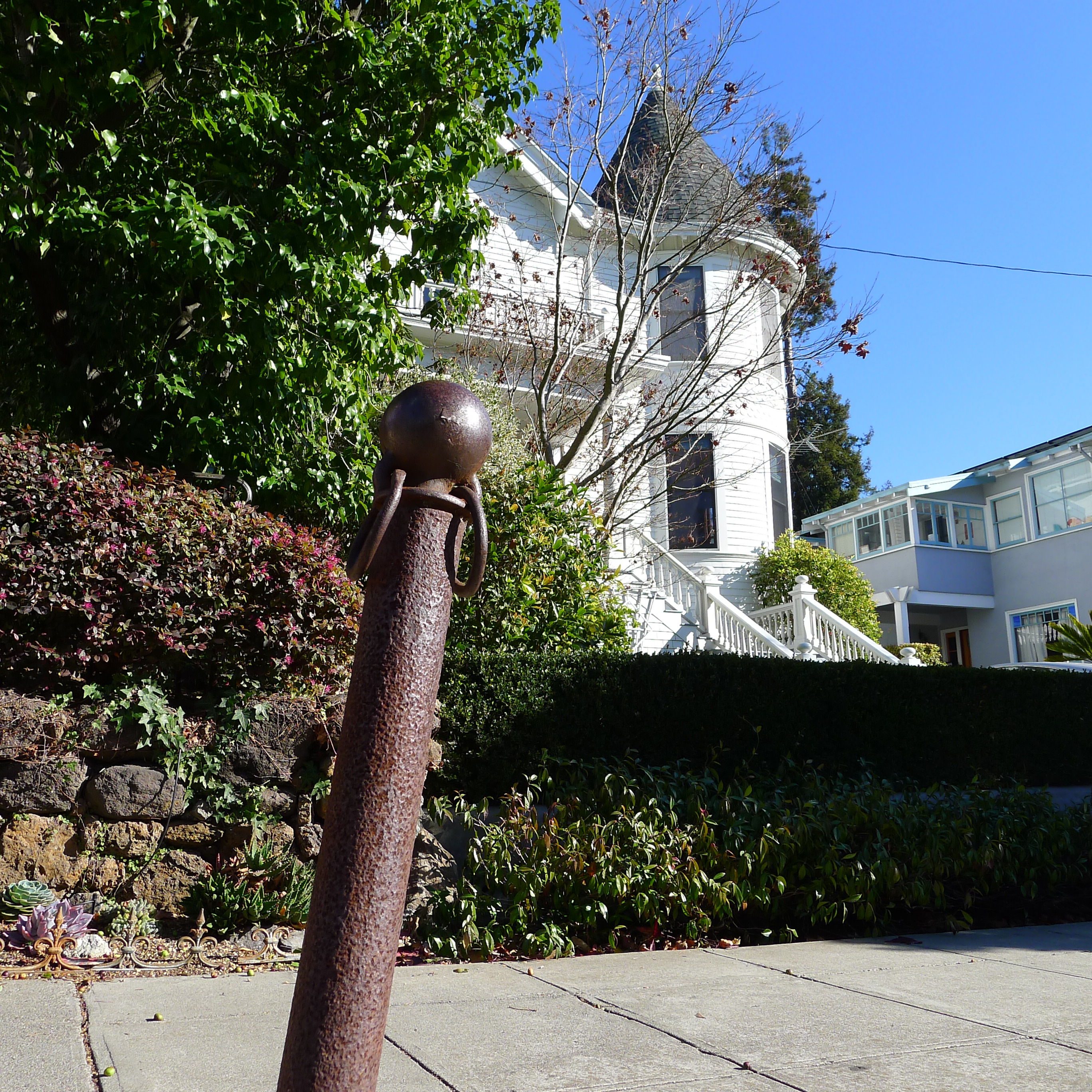



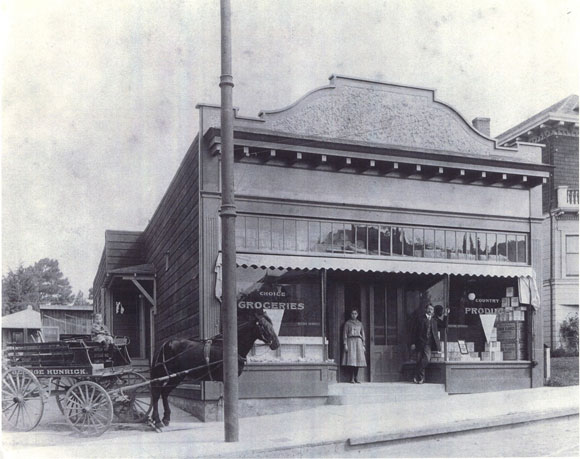



















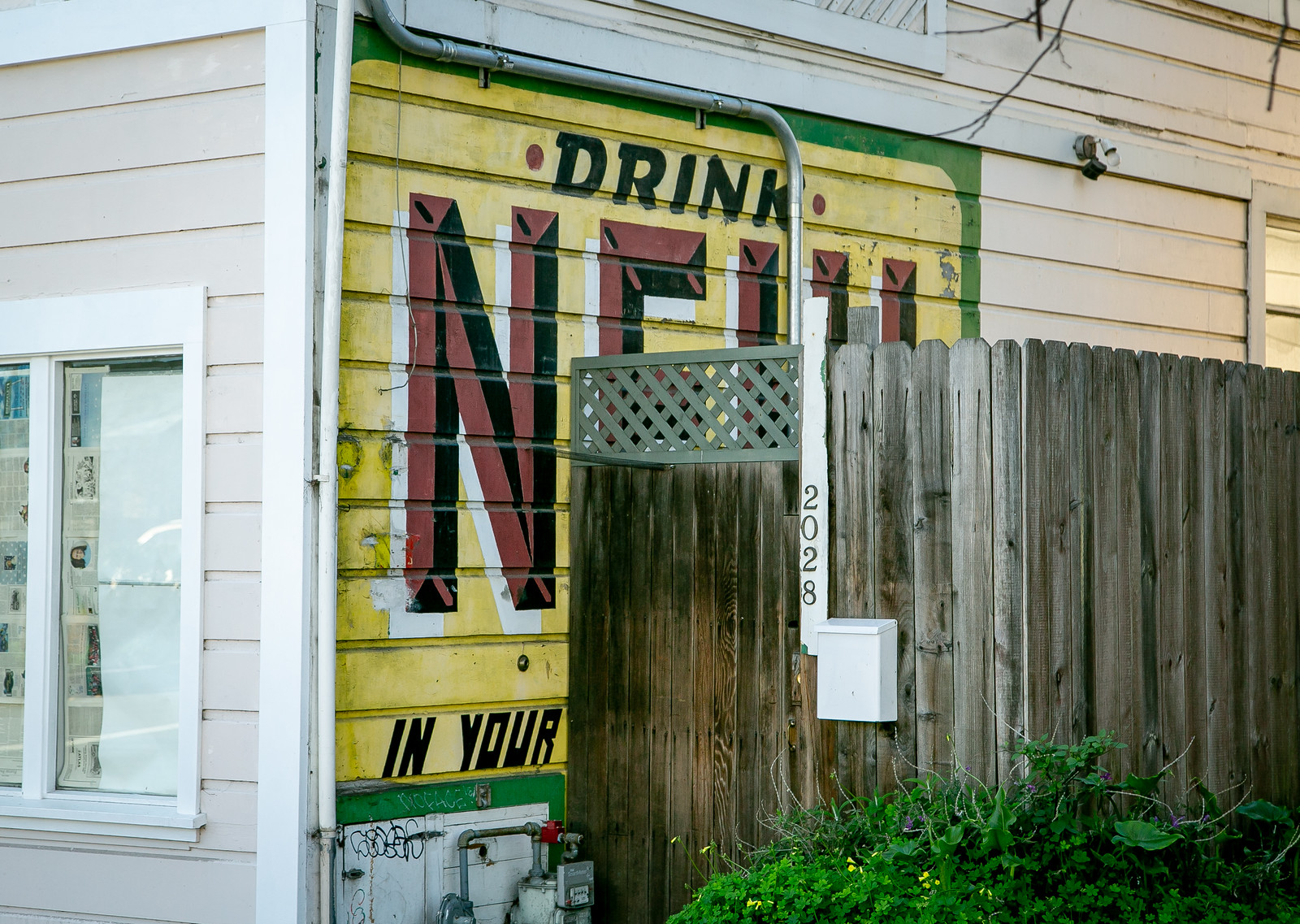
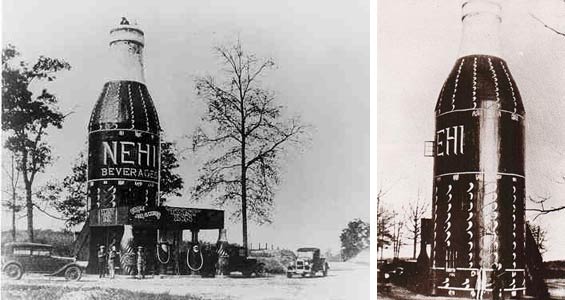






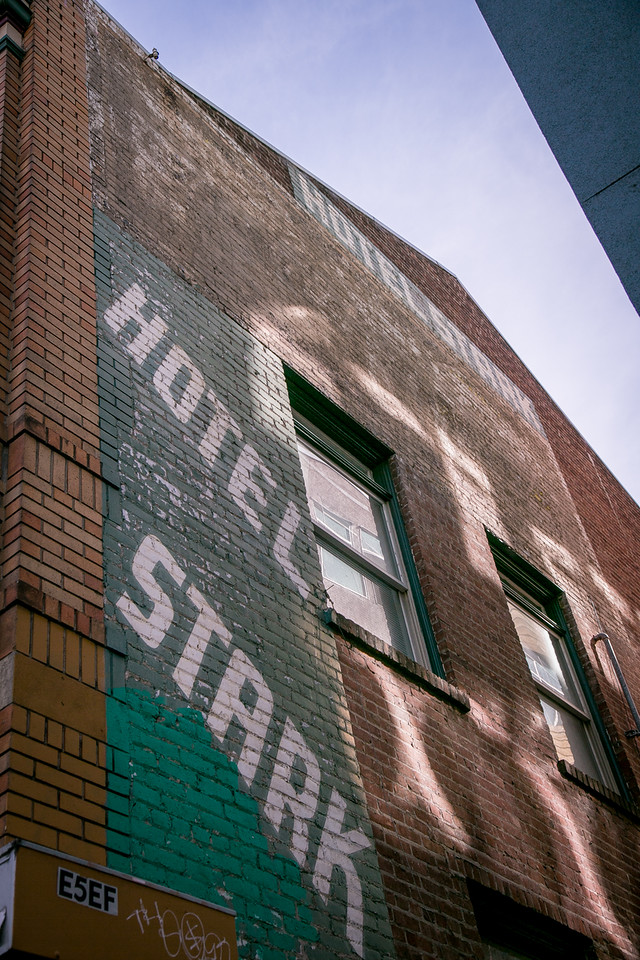





















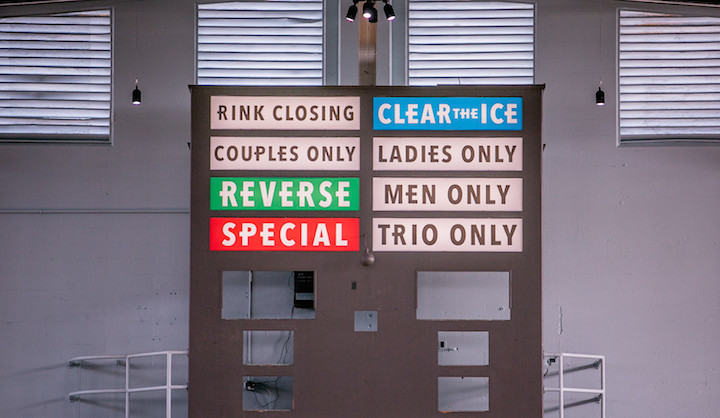



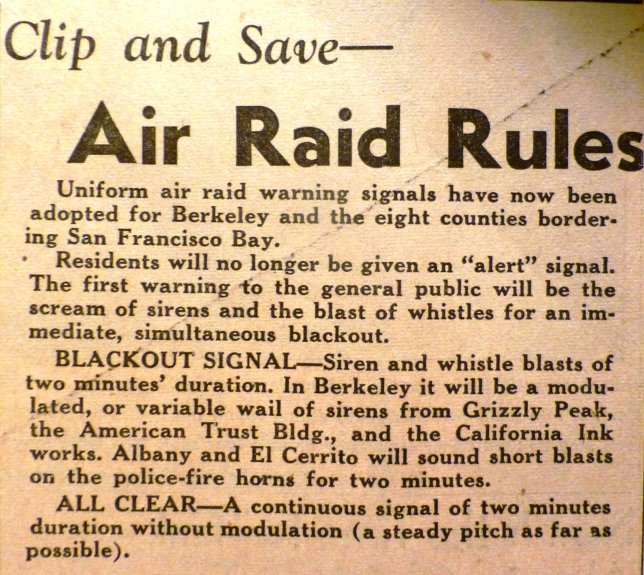

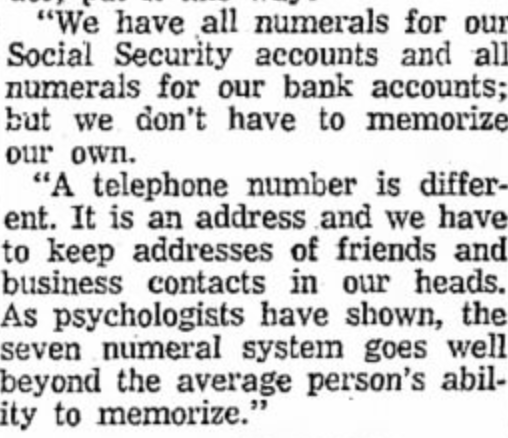






OMG this article is brilliant, funny, fun and amazing! So much cool info about my life! Thornwall was my phone prefix- so many wonderful memories here!! Thanks so much! You totally rock!! Peace and love to you!
Great piece, Tom. I feel very old now! M
Police call box on phone pole Hopkins at Sacramento https://www.google.com/maps/@37.8810491,-122.2832035,3a,75y,37.12h,89.29t/data=!3m6!1e1!3m4!1slNNegROyFsTVScEwFQZkeg!2e0!7i16384!8i8192
Air raid siren on top of 2956 College (formerly Merrit toy?)
Ohhhh just brings me back to the in the day! Spent many wonderful days with the Lashers
as a kid. We went to school together! A glorious post as always. Many thanks
I never hitched my horse to a post in Berkeley, but I certainly tested many a TV tube at Al Lasher’s! As Mark says, now I feel old 🙂